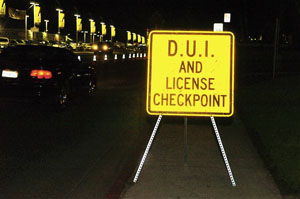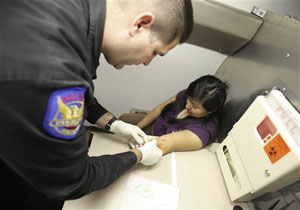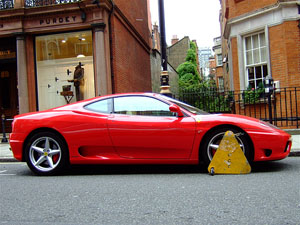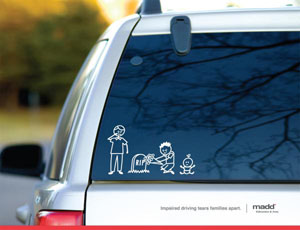 Santa Fe’s DWI Forfeiture Ordinance benefited from the unexpected consequence of accruing $231,000 in revenue since the inception of the program in 2009. The city started the DWI Forfeiture Ordinance to keep chronic drunk drivers off the road. The $231,000 does not take into account the money owed to towing companies.
Santa Fe’s DWI Forfeiture Ordinance benefited from the unexpected consequence of accruing $231,000 in revenue since the inception of the program in 2009. The city started the DWI Forfeiture Ordinance to keep chronic drunk drivers off the road. The $231,000 does not take into account the money owed to towing companies.
In 2012 alone, 64 vehicles have been seized under the DWI ordinance. The city’s ordinance states that the city has the right to forfeit any vehicle that is driven by a someone with a previous DWI conviction. The ordinance also extends to a vehicle that is knowingly being lent to a driver with a previous DWI conviction.
There are 46 vehicles and their owners and lien holders currently in legal dispute.
The city holds 129 vehicles in two different impound lots. The charge is $10 a day for storage.
City Attorney Alfred Walker says, “People are obviously not happy when they lose their car, but we try to make them feel like they’ve been heard through the process, and people usually respect that.”
When a car is seized, a person has 30 days to request an administrative hearing to either request an administrative hearing with the city or file an innocent-owner affidavit, which would state that the owner of the vehicle had no knowledge of the driver’s previous DWI offenses.
A hearing is set with an independent hearing officer to determine if police had probably cause to seize the vehicle. In just the month of October, there are already 50 hearings scheduled.
The vehicle is returned with no fees if the owner wins the hearing. The fees that are paid mount up quickly and substantially. There is a $200 administrative fee, a $70 a week fee to hold the car in addition to the $10 daily fee, a $150 boot fee, a $250 interlock tracking fee, and the towing fee which is variable.
If the hearing officer find that police did have probably cause to seize the vehicle, then the case is forwarded to a District Court where a judge decides whether to return the car to the owner, or hand the title over to the city of Santa Fe.
DWI Forfeiture Program Administrator Amanda Katz said that a majority of the vehicles that come to the impound lot are abandoned and never claimed.
Santa Fe has sold 40 vehicles in three auctions since 2009. The auctions made just over $42,000 in sales. A Ford Ranchero with just 21,368 miles on it sold for just $4,500, but most of the vehicles sold for less than $1,000.
The state Department of Transportation granted Santa Fe $320,000 over the last three years to get this forfeiture program off the ground and 2012 is the last year that Santa Fe will be aided by the grant.

 Pinellas County has very tough penalties for DUI, and tougher penalties can apply depending on your level of blood alcohol content. If your BAC is above .15%, you can be fined $1,500 for just a first offense, and you can face up to nine months in jail.
Pinellas County has very tough penalties for DUI, and tougher penalties can apply depending on your level of blood alcohol content. If your BAC is above .15%, you can be fined $1,500 for just a first offense, and you can face up to nine months in jail.
 In July 2012, Mississippi passed a DUI child endangerment law which created a separate offense for driving under the influence with a passenger under the age of 16.
In July 2012, Mississippi passed a DUI child endangerment law which created a separate offense for driving under the influence with a passenger under the age of 16. California drivers no longer have the option to choose which chemical test they may take when arrested for driving under the influence. The old law allowed a driver to decide whether they submit to a blood, breath, or urine test. Sometimes, the driver who submitted to a breath test would also be request to take either a urine or blood test, again one of their choosing.Revisions to this law prohibits the arrestee’s option of choosing a urine test, and instead requires that if a blood test is unavailable then they have automatically consented to giving a urine test. The new law states that a person only has the choice of a breath or blood test. If a person is unable to give a blood test and is exempted from doing so, then they must give a urine test.
California drivers no longer have the option to choose which chemical test they may take when arrested for driving under the influence. The old law allowed a driver to decide whether they submit to a blood, breath, or urine test. Sometimes, the driver who submitted to a breath test would also be request to take either a urine or blood test, again one of their choosing.Revisions to this law prohibits the arrestee’s option of choosing a urine test, and instead requires that if a blood test is unavailable then they have automatically consented to giving a urine test. The new law states that a person only has the choice of a breath or blood test. If a person is unable to give a blood test and is exempted from doing so, then they must give a urine test.
 Butte’s DUI task force met this week to discuss new ideas for DUI prevention in the county. DUI preventions present in Butte include the 24/7 Sober Program, Mariah’s Challenge, and a Butte DUI Court which started last October.
Butte’s DUI task force met this week to discuss new ideas for DUI prevention in the county. DUI preventions present in Butte include the 24/7 Sober Program, Mariah’s Challenge, and a Butte DUI Court which started last October.
 A
A 

 Since 2010, all drivers convicted of DWI in New York must use an ignition interlock device on their vehicle for a minimum of six months. The device will not allow the car to start if alcohol, which can be as low as .025%, is detected in the driver’s breath. This zero tolerance policy started as a provision under New York’s “Leandra’s Law”, also known as the Child Passenger Protection Act.
Since 2010, all drivers convicted of DWI in New York must use an ignition interlock device on their vehicle for a minimum of six months. The device will not allow the car to start if alcohol, which can be as low as .025%, is detected in the driver’s breath. This zero tolerance policy started as a provision under New York’s “Leandra’s Law”, also known as the Child Passenger Protection Act.